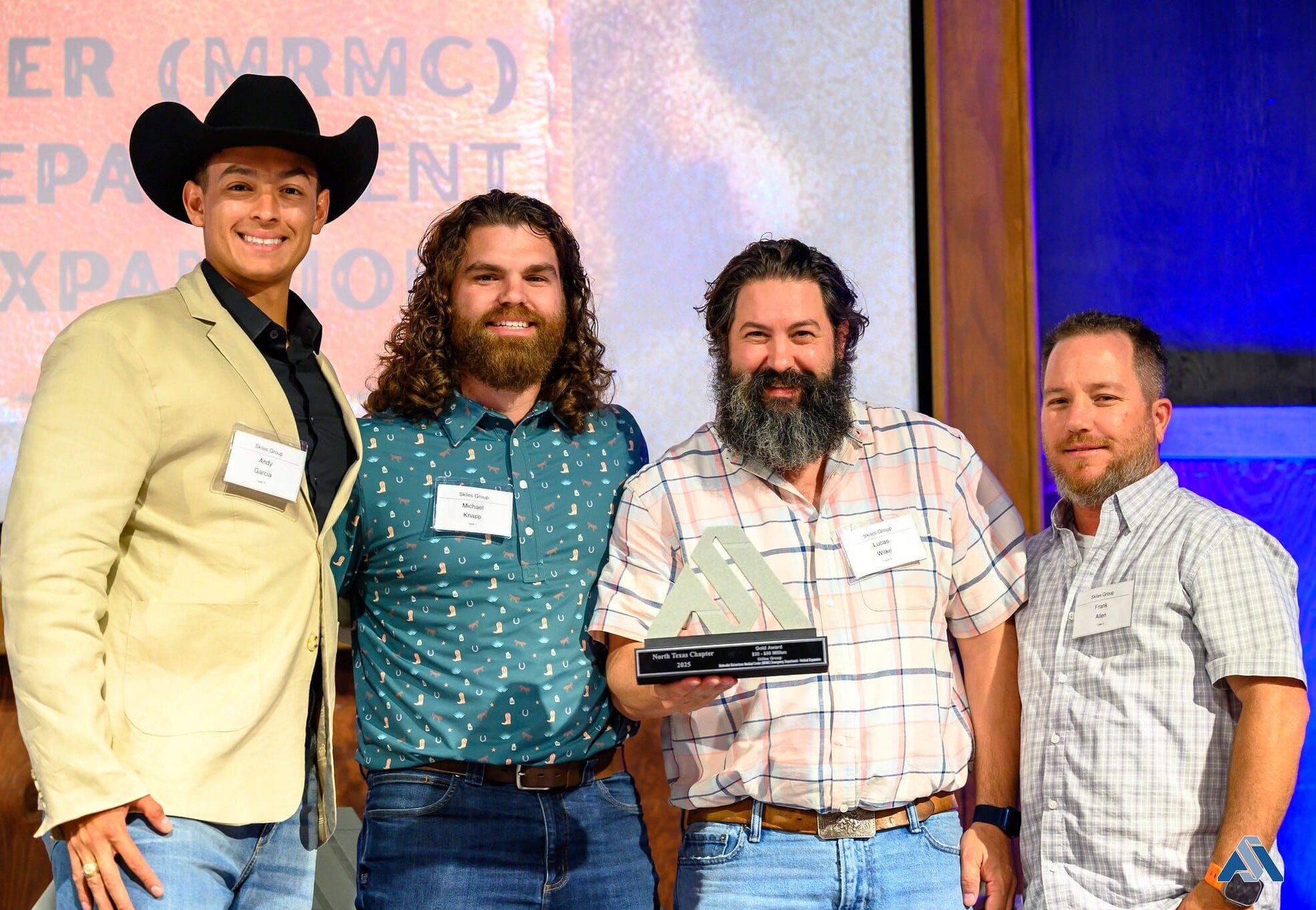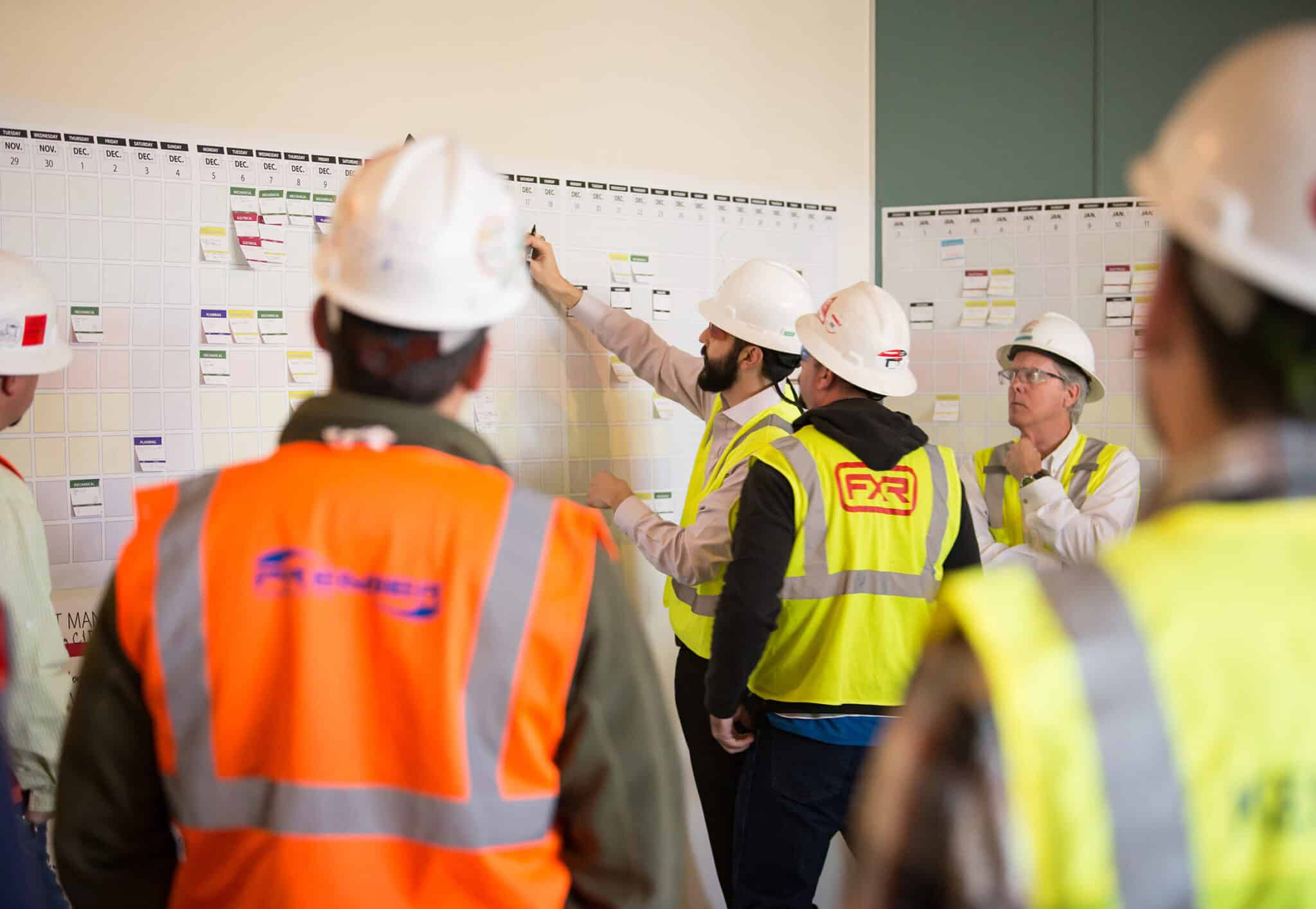Distended designs. Slipped schedules. Busted budgets. Cloudy, contentious communication.
Welcome to a majority of the projects delivered in the AEC industry.
Have you ever had a construction project that left you feeling like you were “in the doghouse”? Maybe you ended up with a facility that you felt was over- or under-designed, because the finished product didn’t quite meet your needs, or those of your staff.
Maybe the project started — and subsequently finished — late due to being over budget or needing to go through multiple “value engineering” exercises. Maybe your goals and expectations were misunderstood or misaligned with those of the other stakeholders and team members, and the delivery of the project suffered because it was stressful (or even flat out combative). Maybe all of these.
It’s an unfortunate reality that construction projects are fraught with waste: wasted time, wasted money, and (worst of all) a wasted opportunity to get it right. The way we currently do business in the AEC industry sets most projects up for failure.
This article will peel back the curtain to candidly explain WHY this is so prevalent, and then explain HOW your future projects can be planned to change this.
First, the WHY. In traditional Design-Bid-Build projects, architects/engineers and owners spend months working together on a design — most often, with little or no input on cost or current market conditions from their construction manager/general contractor (CM/GC).
Once the design has been completed, the construction documents are then sent out to multiple CM/GCs and then on to the trade partners/subcontractors, who are given only a few weeks to estimate the cost for the entire project. This compressed timeframe does not allow adequate room for your contractor and the trades to thoughtfully scope the work and have the kinds of conversations with each other that will better ensure the budget is positioned for success.
Another complicating factor is that those construction documents can contain errors, scope gaps, and/or ambiguities. Because the focus is now only on cost, and CM/GCs have no option available to them to be competitive other than to offer the lowest possible price, the CM/GCs and their trades will likely avoid worrying about the intent of the drawings and only price exactly what is shown — regardless if it will work or not. They know that once they’re selected, they can hash out those details and fix those issues with RFIs, and Change Orders — which, of course, effectively stretch the schedule and stress the budget.
This RFI/CO process also has the potential to create an adversarial environment ripe with finger-pointing, blame-gaming, and back-stabbing, ultimately leaving the client feeling frustrated, deceived, or misled. This is a poor environment for an important construction project where trust is essential, collaboration is critical, so much is at stake, and millions of dollars are being spent.
Whose fault is this? Everyone — and no one. It’s just “the way things are done.” Right?
Wrong. It doesn’t have to be this way, and next you’ll learn HOW you can proactively prevent these issues and their damaging effects on your future work.
But first, a friendly warning: you need to know this requires a new approach to thinking about how construction projects are delivered. If you want to change the way this works, you must change the process you employ and the way your project team works together. Change can be uncomfortable; it can also be transformative, and that’s what this article seeks to help you accomplish.
#1. – Bring Your CM/GC & Trades on Early
If your CM/GC and trade partners are brought on board at the conception phase of the project, it allows the design team to have the advantage of engaging with and being informed by the exact same people who will be procuring materials and building the project as they design. This dramatically reduces the need for re-work due to constructability issues, because the team is collaborating on the project early and throughout the design process. This way, your architect will be confident that the design will meet the budget, and they know that constructability details have already been worked through.
#2. – Establish a Core Team
A Core Team is comprised of representatives from the Owner, Architect, CM/GC, the MEP Engineer, and key trade partners. This team works together throughout the project’s lifecycle to set the strategic direction of the project and provide “governance” to ensure that the goal of collaboration is met. The members of your Core Team need to be close enough to the project to understand the requirements of the various stakeholders, and senior enough in their own organization to be able to commit resources as required. It’s important that the Core Team function in a very transparent, candid, and collaborative way – and in one that has no hierarchy, where all members of the Team are equals, and all opinions are encouraged and considered.
Supplement this team with an integrated, cooperative environment — architects, engineers, contractors, owners, and trade partners, all working closely together, collaborating, communicating, and problem-solving — and watch what a true project team can deliver with respect to savings, quality, and speed to market.
#3. – Target Value Design
Implementing Target Value Design (TVD) means that the design team will have access to constructability and pricing information from the construction team during the design phase. This allows them to design to the budget, provide an accurate estimate for the owner, remove construction delays due to budget issues, and eliminate so-called “value engineering” (which is simply re-designing to meet the actual budget). The net effect is that the client has a negotiated price that’s been settled in talks between all key players, instead of a “race to the bottom” price.
An additional benefit is that, when it’s time to build, the CM/GC and the trades have a set of construction documents that were developed by the entire team, creating buy-in and a far greater certainty of outcome.
#4. – Host a “True North” Session
Also commonly called “Conditions of Satisfaction”, the purpose of “True North” is to articulate and understand the specific goals and ideals of the project, the team, and the individual stakeholders, thus providing alignment so that the entire team is better able to move forward together in the same direction.
To achieve “True North”, all stakeholders need to assemble in the same room and discuss their specific objectives, which are unique to the project at hand. All of these goals are written down, and then organized into one of six different buckets: quality, cost, delivery, morale, safety, and environment. From there, the team fleshes out what must be done in order to make each goal achievable. Actionable items are produced, along with metrics to measure success. A consensus is built, and documentation is provided to everyone on the team as a reminder of the agreed-upon direction, tasks, and goalposts for the project.
This exercise serves to unify and direct team members, and it yields a tool which can be employed for process mapping, decision-making, and measuring the team’s collective successes throughout the duration of the project.
There is no such thing as perfection. Construction projects will always be complicated, and problems will always arise; however, these steps provide a roadmap for a healthier, more successful, more efficient construction process that will ultimately make it less painful for all stakeholders. Access to relevant information, improved communication, and an environment of teamwork and collaboration where everyone is working together to achieve the client’s dream offers the possibility of a simplified construction experience, and better ensures reliability in design, quality, schedule, and cost — a win/win/win scenario for everyone connected to your project.
You can view the article in the July-August 2019 Issue of Design Cost Data Magazine.





